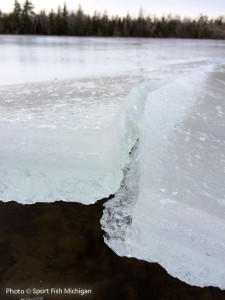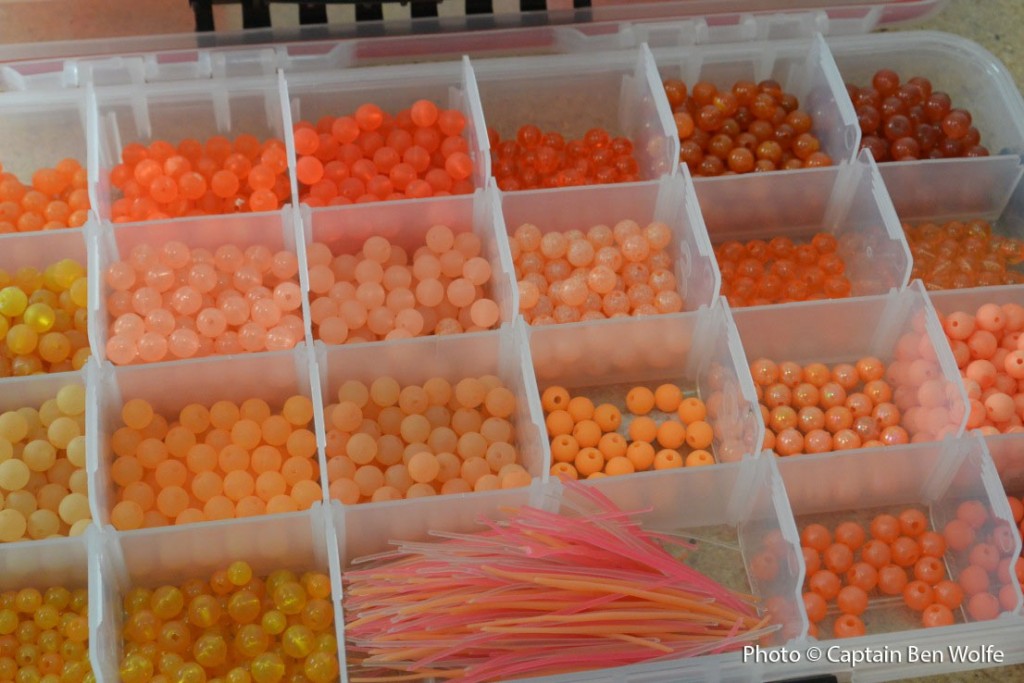Part 2: The Future
Looking ahead to the 2015 season, we are encouraged by the opportunities that lie ahead for all of our guide services. We have a lot of goals, many things that are inspiring us to push further ahead, and things we want to improve upon.
Traverse City Bass Guide Service will be guiding again this year on Grand Traverse Bays as well as many of the potent inland lakes around the Traverse City area in northern Michigan. Bassmaster Magazine ranked the Bays #9 in their rankings of the top 100 Best Bass Fisheries in the World. That’s pretty exciting, especially when 4 out of the 5 lakes mentioned in the rankings were all in northern Michigan! Partnering with a couple of bass guides within the Sport Fish Michigan network of the Michigan’s top Captains and Guides, we can offer trips on each body of water mentioned in the Bassmaster Magazine rankings. Who knows where these lakes will be ranked in 2015 but the future looks incredible, and we are excited for spring to be here so that we can get back out, chasing after smallmouth and largemouth bass. With changes to the Michigan fishing regulations on the horizon, we may even see a change which will allow us to be able to target bass year-round in a catch & release manner. Under the proposed Michigan DNR changes, the open season would remain the same, but we would now be able to target bass all year long when practicing catch and immediate release.
Wolfe Outfitters will be entering its second full season as the only permitted outfitter allowed to fish inside the Sleeping Bear Dunes National Lakeshore. What makes this truly exciting is that we are poised to be able to target the outstanding steelhead and brown trout fishery at the mouth of the Platte River in the spring. Steelhead and brown trout can be caught with a variety of techniques including casting, fly fishing, and trolling. Casting minnow baits, like jerkbaits, is a great way to enjoy these feisty fish, and with the gin clear water that Platte Bay has, being able to watch these fish fight and chase offerings is nothing short of awesome. For fly anglers, stripping streamers is every streamer angler’s dream come true, as both browns and steelhead respond well to this technique. Trolling andsa jigging can also pay off handsomely out on Platte Bay.
The salmon fishery on Platte Bay is something to behold, and we are hopeful for a great run in 2015. Coho were first stocked in the Platte River by the DNR back in the mid 1960’s, and created the world-class coho fishery that we enjoy today. The bulk of our techniques employ casting and jigging techniques for these awesome fish. We had a lot of customers out on Platte Bay in the Sleeping Bear Dunes National Lakeshore this past fall, and every single person was blown away by not only the incredible fishery on the Bay, but also the scenery. After all, Sleeping Bear Dunes wasn’t named the most Beautiful Places in America by a Good Morning America poll for nothing!
Jigging trips went extremely well last year, and we are looking forward to building on that momentum. With the incredible lake trout fishery that the northern Michigan area has to offer, jigging is a truly addictive way to target these fish. With the light bass tackle that we use, anglers get to feel every bump and bite from these aggressive biters, and the fight is heaps more than many anglers have experienced in the past with other techniques.
River trips will continue to be a major focus of Wolfe Outfitters and its Guides in 2015, and we are excited about the prospects of not only lots of salmon and steelhead trips, but also about the outstanding smallmouth bass fishery on the Manistee River as well as its trout fishery. The portion of the Manistee River just below Tippy Dam is absolutely spectacular for trout fishing, and this year’s fish will be pushing a very healthy 20 inches by the end of the summer, with many fish well over that mark.
We have both Michigan State and Federal permits, including the highly coveted permits for the Manistee National Forest. This gives us access to fish the entirety of the Manistee River, utilizing the Federal launches that many other guide services aren’t able to take advantage of with their customers. While the salmon and steelhead runs were below average, and definitely below what we have become accustomed to, we are excited about the spring steelhead run. With low numbers of steelhead running all of the northern Michigan rivers in the fall, this sets up well for a stellar run in the spring. We are looking forward to targeting these chrome beauties when they enter the area’s rivers.
Sport Fish Michigan has grown each year, and we are hopeful that 2015 will be no exception! We are thrilled to have each and every Captain and Guide that we have, and each brings something special to our customers’ trips. From fly fishing to bass fishing, trolling the big lake to river trips, and even ice fishing, we are working hard to offer everything an angler might want around the state. We are once again sponsoring the Hook n’ Look television show on the Outdoor Channel in 2015, and are excited about the national exposure from this popular show.
In addition to the Hook n’ Look show, we hope to be able to produce our own videos on a variety of fisheries utilizing our Sport Fish Michigan Captains and Guides. We plan on filming walleye fishing in the spring on the Detroit River. The Detroit River is truly spectacular for walleye fishing in the spring, when these tasty fish run into the river to spawn. We also plan on filming bass fishing with several of our Captains on Lake St. Clair, taking advantage of this world-class bass fishery.
Further north, lies the Muskegon River, the Manistee River, Betsie River, and Platte River. All boast stellar steelhead runs, and it is our goal to film some steelhead clips on these rivers fishing with our Guides both with conventional tackle as well as on fly.
Atlantic salmon are on the list of species we would like to highlight as well, and Torch Lake just north of Traverse City is host to an impressive population of Atlantics. The super clear water that Torch Lake is known for will make this a treat, as these are a beautiful fish.
We are also tremendously excited to be the largest ice fishing operation in Michigan, and are hoping to build upon the successes of last year. Ice fishing is a very popular aspect of fishing, and early indications are that we will be busier than ever. This year, we are planning an inaugural on-ice seminar clinic that will span 2 days. We will discuss rigging options, how-to demonstrations, and technique options accompanied by hot catered lunches right on the ice. All of the necessary tackle and gear will be provided for the seminar, as well as transportation on and off of the ice.
In all, the future is bright for everything that we have to offer. With continued hard work and dedication by all of our Captains and Guides, we will continue to strive to create lasting memories and outstanding experiences for each and every one of our customers.
















